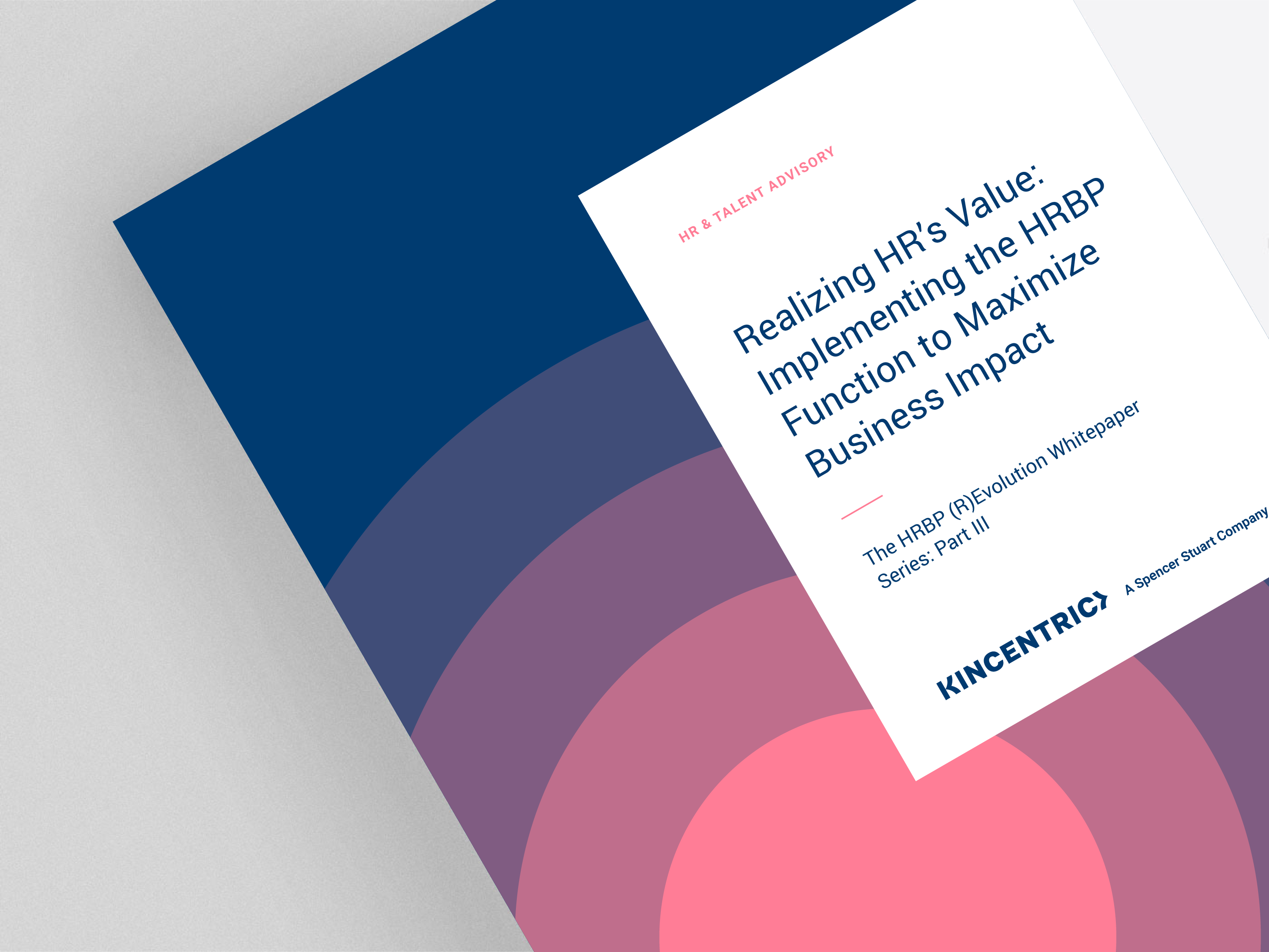
While the first two articles (Critical Differentiators of Top HR Business Partners and Preparing to Rise Up: How HR Business Partners Can Navigate Their Career and Position Themselves for Success) in our three-part series on the HR Business Partner role have focused on the individual HRBP—the key differentiators that set top HRBPs apart and the specific actions they took to successfully navigate their careers—we now turn our focus to the things CHROs need to consider in order to set the HRBP function up for success.
Organizations are asking HR to focus on consultative, strategic activities (even if they don’t always know it), yet HR continues to spend the bulk of its resources and time supporting transactional processes and fixing issues. The HR Business Partner role is a critical component in driving this strategic focus, and CHROs must act now to establish or enhance this role to enable business outcomes.
We have identified six essential elements needed to realize the full value of the HRBP role, based on our discussions with leading HRBPs across the globe, their responses to our HRBP survey (specifically the question around the key barriers to their success), and our own experience and insights gained through our consulting with global organizations around the design and implementation of the HRBP function.
Kincentric’s Next HR Operating Model:
Focused on Business Enablement, HRBPs Are One Piece of an Integrated HR Function
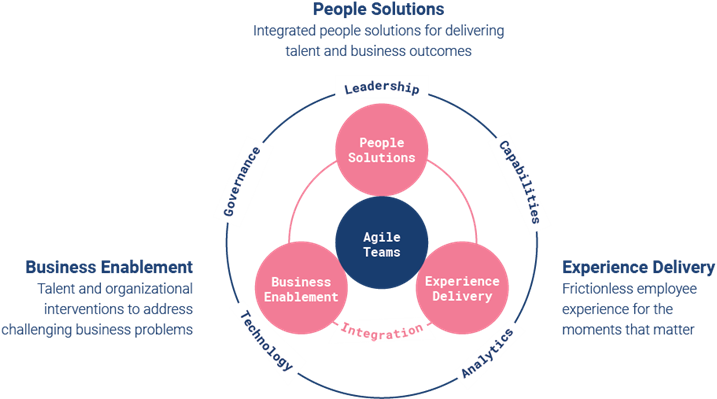
"Our HR transformation and specifically the establishment of the HRBP Group would not be successful were it not for the strong vision provided by our CHRO. She knew what ‘good’ looks like and why HR (and the HRBP function) needed to move towards that future-state."
— Robert Micera (UHS)
Implementing the HRBP function requires a (r)evolutionary change, led by a visionary CHRO willing to take action. The transformation of the HR function and implementation of the strategic HRBP role is where the wheels of change begin turning. As one top HRBP put it, “A leader chooses the right focus, makes their people more accountable and guides the organization in the needed direction.” Another top HRBP shared that their CHRO had “an ‘intentionality’ for HR and a vision for what the function needed to be.”
As the most senior HRBP in the organization, CHROs play a critical role in engaging with the business and its leadership, facilitating change (i.e., “What’s in it for me?”), communicating and role modeling HRBP behaviors at an organizational and personal level. A strong CHRO lays the foundation for an HR transformation and demonstrates the resilience needed to ensure a successful implementation of the new/enhanced HR operating model. As one HRBP expressed, their CHRO was a driving force that “removed the barriers” and created alignment on how the business and HR were “ONE team.”
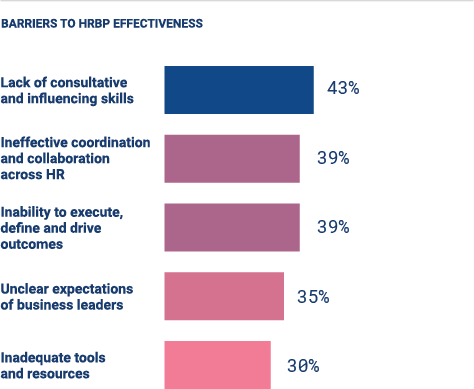
CHROs Ask Yourself...
"You also need to be firm with what you do and don’t do. You need to know the responsibilities of the role and be confident in it and be true to that. I think sometimes HRBPs have a hard time saying where they are the expert and what they need to be successful."
— J Michael Lane (UCSF)
In our experience working with organizations to design their HRBP function, clarifying the scope of the role— specifically what the role WILL and WILL NOT do—is critical to setting the role up for success. Articulating this, and then communicating (and reinforcing) it with all relevant stakeholders, including the HRBPs themselves, is important to fully realize the role’s value. As one HRBP said, “Be clear on your role and the services you provide, what you will and will not do, and where you add value.”
In the survey we conducted with top HRBPs, 35% highlighted “unclear expectations of business leaders” as a key barrier to success. In many cases, leaders don’t know what they don’t know, and it’s up to HRBPs to educate them on the value they provide. A top HRBP said this well: “When we educate the business on our value and what we really can do, then our interaction with the business moves from a PUSH to a PULL.”
For HRBPs who struggle with setting boundaries and pushing back against the business, it’s important to realize that, as one top HRBP put it, “If you are spending too much time on things that don’t drive value, you are not set up to lean into the things that will.” Another emphasized, “HRBPs need to have both the fortitude and confidence to claim where they will play versus not play.” Ultimately, the HRBP’s primary focus is to enable strategic business objectives. As CHRO, you need to set the right expectations with business leaders and reinforce them on an ongoing basis. You also need to do the same with your HRBPs, so they feel like they have your backing and support to push back against key stakeholders when needed.
CHROs Ask Yourself...
"The success of the HR Business Partner is linked with the success of the business leader."
— Mar Hernandez (Amplifon)
As with any role, metrics are important in driving outcomes. However, unlike functions such as Talent Acquisition, which has standard metrics to track effectiveness (e.g., Time to Fill), there is no one consistent and quantifiable measure of success that can be applied to the HRBP role. Understandably, all of the HRBP leaders we spoke with had different measures of success for the role because ultimately, these should be unique to the business supported and the specific programs the HRBP is helping drive.
Early in their tenure, it is important that the HRBP aligns with their business leader on what success looks like. This should be less about doing everything the business leader wants so that they “like” their HRBP and more about how the HRBP is helping them achieve their business objectives. As one top HRBP told us, the questions you should ask include “Are you meeting business objectives? Are you sharing in the business’ success? Are you playing to your position versus being the order taker?” Once aligned, it is important to gather customer feedback on an ongoing basis—based on the identified success criteria—and this feedback is key to ensuring accountability for the HRBP. Examples of HRBP metrics that the leaders we spoke with measure include:
As CHRO, you need to ensure your HRBP success measures are tied to specific business outcomes, establish HR-related measures for them where relevant and hold them accountable for what they should and should not be doing.
CHROs Ask Yourself...
"I can deliver very little on my own as an HRBP. This is a fully integrated model that requires us to develop solutions across the model."
— Greg Boothroyd (Vail Resorts)
As we have highlighted in previous whitepapers in this series, building relationships with key stakeholders, including HR, is crucial to the success of an HRBP and the integration of this role with the other pillars outlined in Kincentric’s NeXt HR Operating Model is critical. Successful HRBPs recognize this. In fact, 39% of HRBPs we surveyed cite “ineffective coordination and collaboration across HR” as a barrier to success. As one top HRBP said, “Without the partnership of the COEs and Shared Services, none of the HRBP goals can be executed or achieved.”
When successfully integrated, the HR team comes together to form “One HR” and can represent a united front to the business. Too often we see an “us versus them” mentality in how HR pillars interact with each other. This not only hampers the overall effectiveness of the HR function and its impact on the business but reflects poorly on the function as a whole. As one HRBP leader said, “Great COE and HRBP collaboration is essential to optimizing impact to the business. They have to appreciate what the other brings.” Another emphasized, “It’s super important that they (the business) look at us as ‘HR’. I will never throw my colleagues under the bus.”
This is not to say that everyone must always agree with each other. As one top HRBP highlighted, “When you have healthy tension and great advocacy, you can significantly improve the programs you offer, and show where those programs help drive the business.” It’s important to note that the onus of driving a “One HR” mindset is not just on the HRBP. The CHRO needs to set the tone for the function by fostering a culture of teamwork and collaboration and must reinforce expectations of HR at any given opportunity.
CHROs Ask Yourself...
"You have to build a structure around the HRBPs that support them. They are fighting the good fight and they need to know that the rest of HR has their back. This emboldens them and makes them more comfortable."
— Paula Ramirez (BECU)
For an organization’s HR Operating Model to truly drive the desired outcomes, it needs to be enabled by strong leadership (as we emphasized in Element #1), clear governance, the right capabilities, intuitive technology and robust analytics — as highlighted in Kincentric’s NeXt HR Operating Model. HRBPs cannot be set up for success without these foundational elements in place. As one top HRBP shared, “What I’ve seen is that organizations say, ‘we want HRBPs to be strategic’ but then everything is on paper.”
Without these foundational basics, HRBPs often get pulled into administrative tasks and minutiae due to unclear ownership of where that work should sit, inadequate technology, lack of data to drive insights and absence of clear access channels for HR (resulting in the HRBP serving as the single point of contact for all HR needs). Investing in these elements early on will not only enable HRBPs (and the rest of HR) to be more effective but will also lead to a more positive employee experience with HR. While there are cost implications to consider, the only investment most of these enablers require is time. For instance, bring HR leaders together to conduct a RACI (Responsible, Accountable, Consulted, Informed) exercise across all HR functional areas early in the design process to enable clear governance. Follow that up with scenario testing to play out how this will manifest across key process areas.
At the same time, successful HRBPs don’t let the infrastructure shortcomings limit their ability to deliver value to the business. Tools and resources in particular are always a challenge. As one HRBP leader told us, “HR is often not resourced as well as other functions, so you need to make do with what you have and not be paralyzed by some limitations.” This goes back to the importance of HRBPs “persisting through challenges” to position themselves for success.
CHROs Ask Yourself...
"HRBPs often see themselves in a service role. They don’t empower themselves enough to advise. It starts with a mindset shift for HR colleagues."
— Atul Gaur (L’Oreal)
Effectively designing the HRBP role is just the first step in the process of realizing the value this role provides. In our experience, this is the easy part. The real key to ensuring success is in how the role is operationalized across the organization, and that’s when change management becomes critical.
This is important not just for the business but also for the HRBPs themselves. While business leaders need to understand the purpose of the HRBP role and how it will support them, HRBPs need to be able to shift their own mindset and behaviors to effectively serve as strategic thought partners to leaders. In fact, the “lack of consultative and influencing skills” was the top barrier to success for HRBPs, with 43% considering this to be key. Investing in HRBP capability building — whether through formal learning, individual coaching or action learning cohorts — is imperative to ensuring HRBPs are set up for success. Also consider facilitating change management workshops for HRBPs specifically focused on how their day-to-day work will change.
Change management for the rest of the HR function is equally important, as they should understand how and when to interact with the HRBP, as well as the specific handoff points across processes. HR needs to establish who the first point of contact is for leaders in various situations, and everyone should be aligned on how the business will interact with the HRBP as well as the rest of HR. If the roles and accountabilities across the HR function are not clearly defined up front, it can lead to confusion within HR and a poor experience for customers. It is important for the CHRO to have a plan for addressing all of these elements in a thoughtful manner to drive the right behavior change across all impacted stakeholder groups.
CHROs Ask Yourself...
These six key elements highlighted are critical for organizations to fully realize the value of the HRBP role. These elements, combined with the key HRBP differentiators and the essential actions required to become a high-performing HR Business Partner, provide the framework needed when thinking about implementing or enhancing the HRBP function in your organization. We firmly believe that successfully operationalizing the HRBP role is the key to increasing the impact of HR and delivering value to the business.
We would like to thank Michael Martin for contributing his insights to this article.
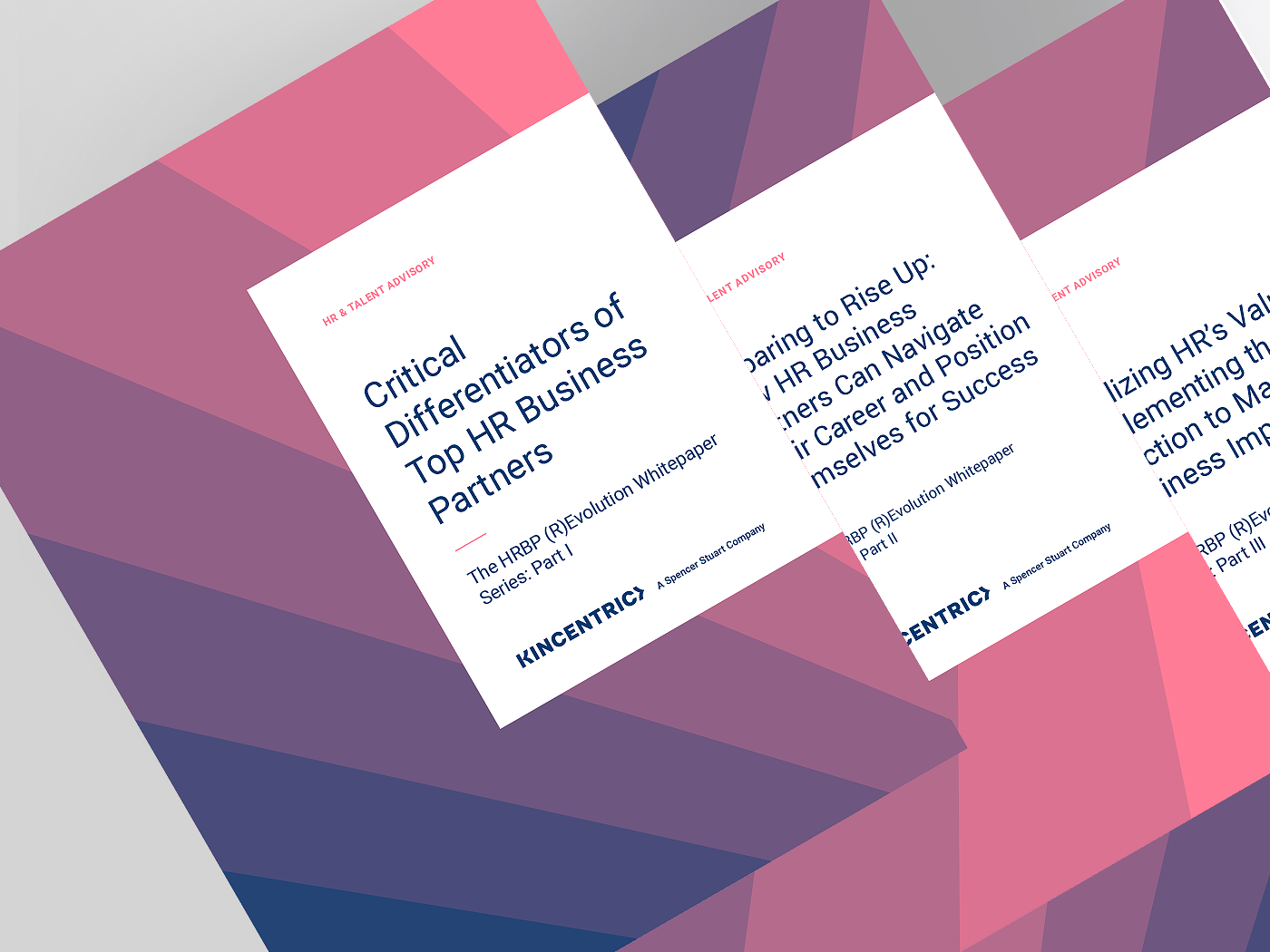
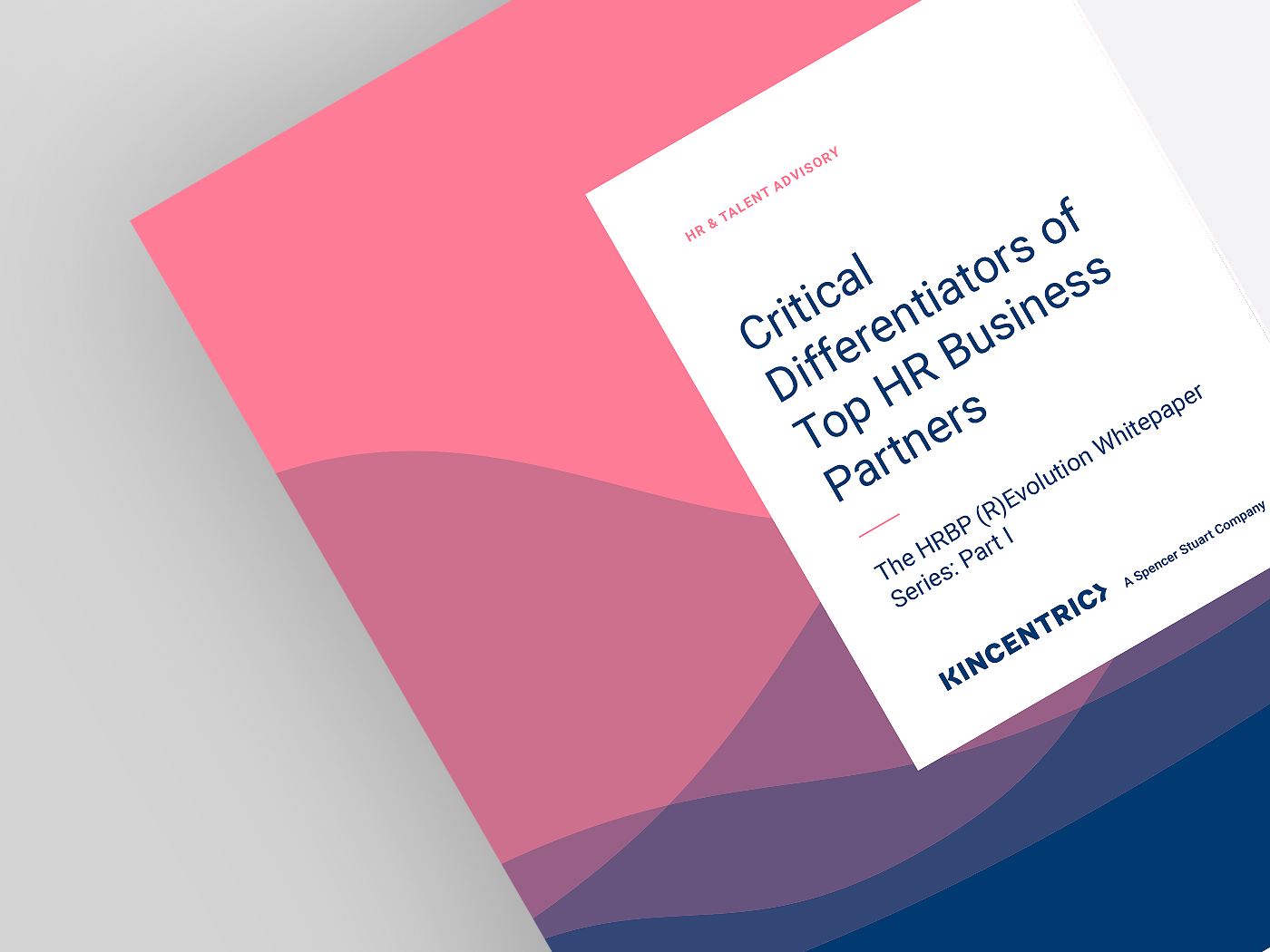
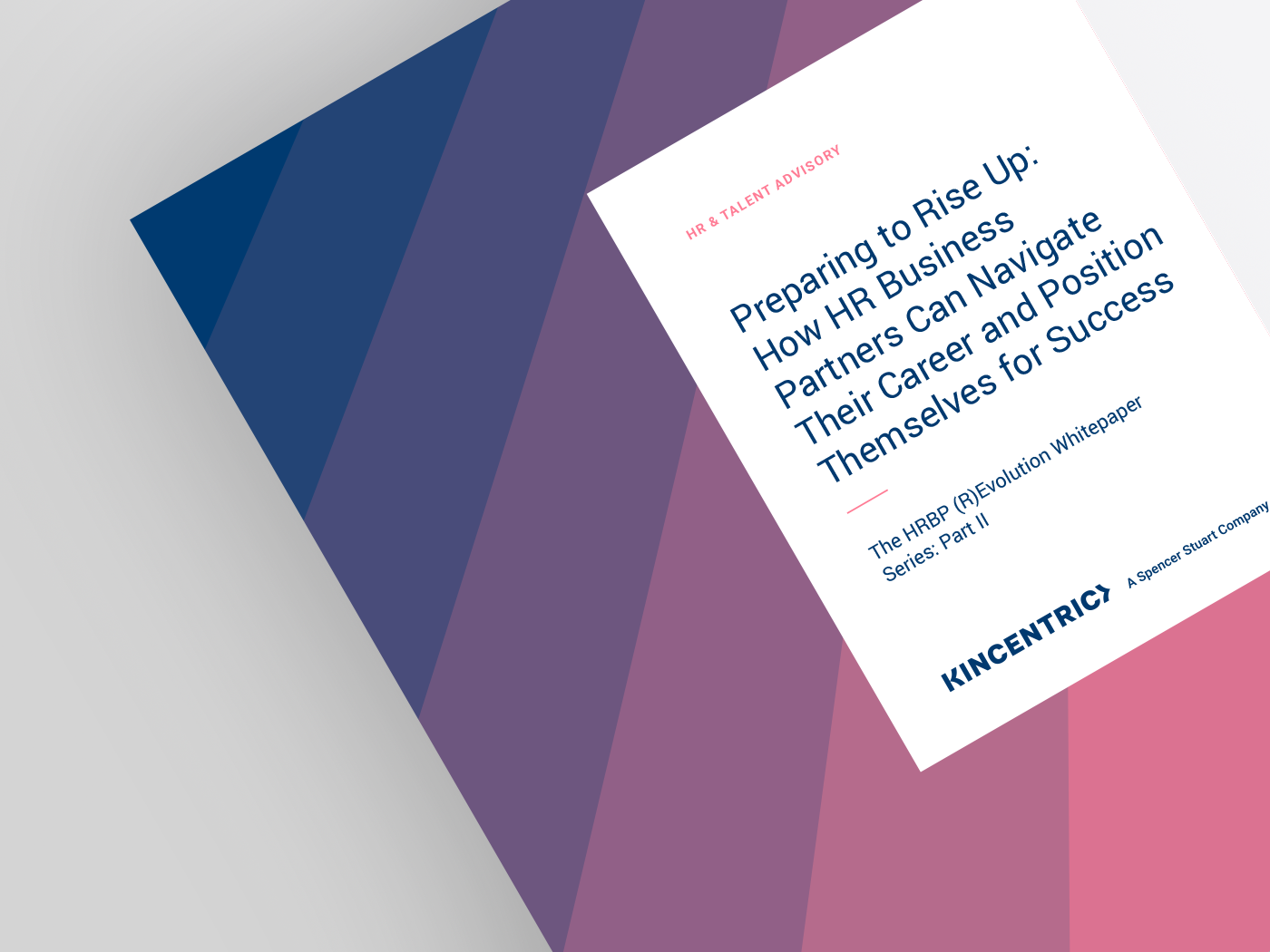
Want the latest insights delivered straight to your mailbox?